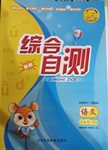|
ÔĶÁÀí½â
¡¡¡¡If cars had wings£¬they could fly and that just might happen, beginning in 2011£®The company Terrafugia, based in Woburn, Massachusetts, says it plans to deliver its car-plane, the Transition, to customers by the end of 2011£®

¡¡¡¡¡°It¡¯s the next¡®wow¡¯vehicle,¡± said Terrafugia vice president Richard Gersh£®¡°Anybody can buy a Ferrari, but as we say, Ferraris don¡¯t fly£®¡±
¡¡¡¡The car plane has wings that unfold for flying£a process the company says takes one minute£and fold back up for driving£®A runway is still required to take off and land£®
¡¡¡¡The Transition is being marketed more as a plane that drives than a car that flies, although it is both£®The company has been working with FAA to meet aircraft regulations, and with the National Highway Traffic Safety Administration to meet vehicle safety regulations£®
¡¡¡¡The company is aiming to sell the Transition to private pilots as a more convenient and cheaper way to fly£®They say it saves you the trouble from trying to find another mode of transportation to get to and from airports£ºYou drive the car to the airport and then you¡¯re good to go£®When you land, you fold up the wings and hit the road£®There are no expensive parking fees because you don¡¯t have to store it at an airport£you park it in the garage at home£®
¡¡¡¡The car-plane is designed to fly primarily under 10,000 feet£®It has a maximum takeoff weight of 1,430 pounds, including fuel and passengers£®Terrafugia says the Transition reduces the potential for an accident by allowing pilots to drive under bad weather instead of flying into marginal(ÁÙ½ç)conditions£®
¡¡¡¡The Transition¡¯s price tag£º¡ç194,000, But there may be additional charges for options like a radio, transponder or GPS£®Another option is a full-plane parachute£®
¡°If you get into a very awful situation, it is the necessary safety option,¡± Gersh said£®
¡¡¡¡So far,the company has more than 70 orders with deposits£®¡°We¡¯ re working very closely with them, but there are still some remaining steps,¡± Brown said£®
| 
 ¿ÚËãÌ⿨¼ÓÓ¦ÓÃÌ⼯ѵϵÁдð°¸
¿ÚËãÌ⿨¼ÓÓ¦ÓÃÌ⼯ѵϵÁдð°¸ ×ÛºÏ×Ô²âϵÁдð°¸
×ÛºÏ×Ô²âϵÁдð°¸